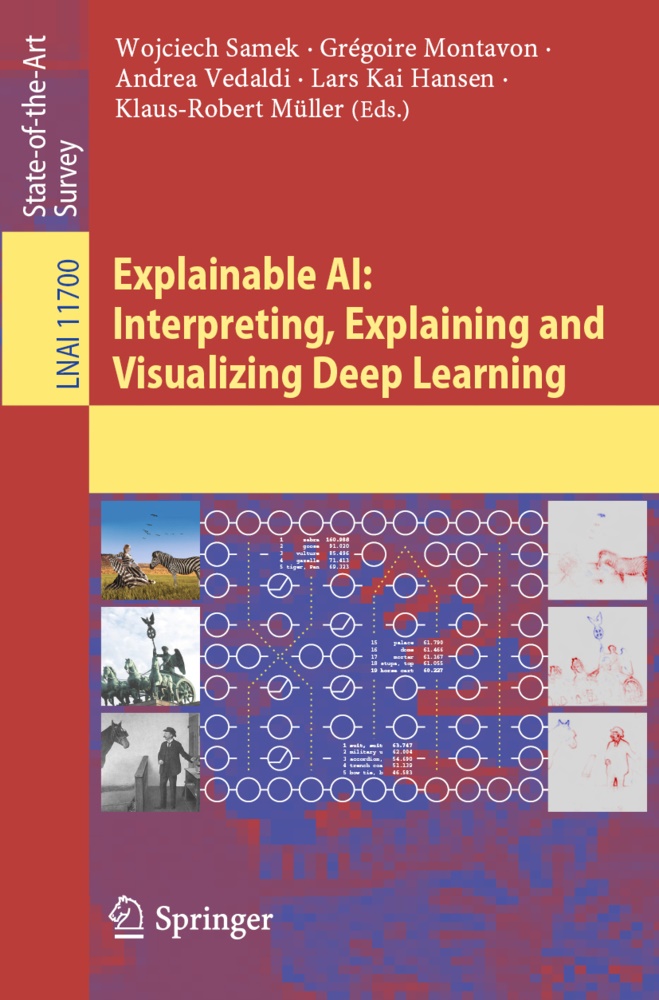Mehr lesen
The development of "intelligent" systems that can take decisions and perform autonomously might lead to faster and more consistent decisions. A limiting factor for a broader adoption of AI technology is the inherent risks that come with giving up human control and oversight to "intelligent" machines. For sensitive tasks involving critical infrastructures and affecting human well-being or health, it is crucial to limit the possibility of improper, non-robust and unsafe decisions and actions. Before deploying an AI system, we see a strong need to validate its behavior, and thus establish guarantees that it will continue to perform as expected when deployed in a real-world environment. In pursuit of that objective, ways for humans to verify the agreement between the AI decision structure and their own ground-truth knowledge have been explored. Explainable AI (XAI) has developed as a subfield of AI, focused on exposing complex AI models to humans in a systematic and interpretable manner.
The 22 chapters included in this book provide a timely snapshot of algorithms, theory, and applications of interpretable and explainable AI and AI techniques that have been proposed recently reflecting the current discourse in this field and providing directions of future development. The book is organized in six parts: towards AI transparency; methods for interpreting AI systems; explaining the decisions of AI systems; evaluating interpretability and explanations; applications of explainable AI; and software for explainable AI.
Inhaltsverzeichnis
Towards Explainable Artificial Intelligence.- Transparency: Motivations and Challenges.- Interpretability in Intelligent Systems: A New Concept?.- Understanding Neural Networks via Feature Visualization: A Survey.- Interpretable Text-to-Image Synthesis with Hierarchical Semantic Layout Generation.- Unsupervised Discrete Representation Learning.- Towards Reverse-Engineering Black-Box Neural Networks.- Explanations for Attributing Deep Neural Network Predictions.- Gradient-Based Attribution Methods.- Layer-Wise Relevance Propagation: An Overview.- Explaining and Interpreting LSTMs.- Comparing the Interpretability of Deep Networks via Network Dissection.- Gradient-Based vs. Propagation-Based Explanations: An Axiomatic Comparison.- The (Un)reliability of Saliency Methods.- Visual Scene Understanding for Autonomous Driving Using Semantic Segmentation.- Understanding Patch-Based Learningof Video Data by Explaining Predictions.- Quantum-Chemical Insights from Interpretable Atomistic Neural Networks.- Interpretable Deep Learning in Drug Discovery.- Neural Hydrology: Interpreting LSTMs in Hydrology.- Feature Fallacy: Complications with Interpreting Linear Decoding Weights in fMRI.- Current Advances in Neural Decoding.- Software and Application Patterns for Explanation Methods.
Zusammenfassung
The development of “intelligent” systems that can take decisions and perform autonomously might lead to faster and more consistent decisions. A limiting factor for a broader adoption of AI technology is the inherent risks that come with giving up human control and oversight to “intelligent” machines. For sensitive tasks involving critical infrastructures and affecting human well-being or health, it is crucial to limit the possibility of improper, non-robust and unsafe decisions and actions. Before deploying an AI system, we see a strong need to validate its behavior, and thus establish guarantees that it will continue to perform as expected when deployed in a real-world environment. In pursuit of that objective, ways for humans to verify the agreement between the AI decision structure and their own ground-truth knowledge have been explored. Explainable AI (XAI) has developed as a subfield of AI, focused on exposing complex AI models to humans in a systematic and interpretable manner.
The 22 chapters included in this book provide a timely snapshot of algorithms, theory, and applications of interpretable and explainable AI and AI techniques that have been proposed recently reflecting the current discourse in this field and providing directions of future development. The book is organized in six parts: towards AI transparency; methods for interpreting AI systems; explaining the decisions of AI systems; evaluating interpretability and explanations; applications of explainable AI; and software for explainable AI.
Zusatztext
“This is a very valuable collection for those working in any application of deep learning that looks for the key techniques in XAI at the moment. Readers from other areas in AI or new to XAI can get a glimpse of where cutting-edge research is heading.” (Jose Hernandez-Orallo, Computing Reviews, July 24, 2020)
Bericht
"This is a very valuable collection for those working in any application of deep learning that looks for the key techniques in XAI at the moment. Readers from other areas in AI or new to XAI can get a glimpse of where cutting-edge research is heading." (Jose Hernandez-Orallo, Computing Reviews, July 24, 2020)

